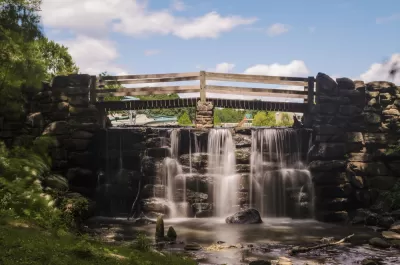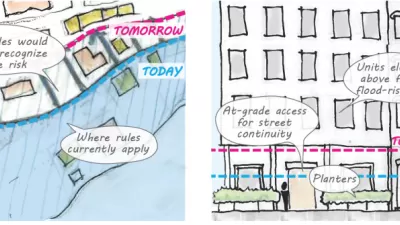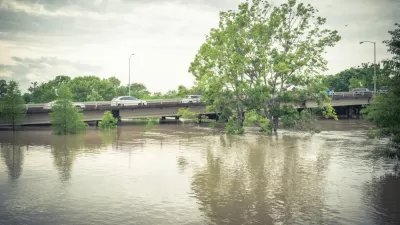More cities are returning waterways to a more natural state—in some cases unearthing them from subterranean pipes in a process known as "daylighting." A new example can be found, perhaps surprisingly, in New York City.

According to an article by Winnie Hu and James Thomas, there is "an enormous trove of water hidden below [New York City's] streets and high-rise buildings — hundreds of subterranean streams, creeks and springs that were buried long ago and all but forgotten as the city grew."
Among that trove is Tibbetts Brook, which is the main subject of the article because of an ambitious plan to unearth, or "daylight," the creek to improve the local stormwater infrastructure.
"The city plans to unearth the brook — an engineering feat known as 'daylighting' — at a cost of more than $130 million, because burying it in the sewer system has worsened the city’s flooding problems as a warming planet experiences more frequent and intense storms," according to Hu and Thomas.
The remnants of Hurricane Ida recently overwhelmed Tibbetts Brook in its current, subterranean form, sending water flooding into the city and inundating the Major Deegan Expressway in the Bronx.
According to the article, "daylighting" is reversing an earlier era's approach to stormwater infrastructure in more and more locations around the world—though New York City might be an unexpected place to see nature being restored, to a certain extent.
FULL STORY: Why New York Is Unearthing a Brook It Buried a Century Ago

Maui's Vacation Rental Debate Turns Ugly
Verbal attacks, misinformation campaigns and fistfights plague a high-stakes debate to convert thousands of vacation rentals into long-term housing.

Planetizen Federal Action Tracker
A weekly monitor of how Trump’s orders and actions are impacting planners and planning in America.

In Urban Planning, AI Prompting Could be the New Design Thinking
Creativity has long been key to great urban design. What if we see AI as our new creative partner?

King County Supportive Housing Program Offers Hope for Unhoused Residents
The county is taking a ‘Housing First’ approach that prioritizes getting people into housing, then offering wraparound supportive services.

Researchers Use AI to Get Clearer Picture of US Housing
Analysts are using artificial intelligence to supercharge their research by allowing them to comb through data faster. Though these AI tools can be error prone, they save time and housing researchers are optimistic about the future.

Making Shared Micromobility More Inclusive
Cities and shared mobility system operators can do more to include people with disabilities in planning and operations, per a new report.
Urban Design for Planners 1: Software Tools
This six-course series explores essential urban design concepts using open source software and equips planners with the tools they need to participate fully in the urban design process.
Planning for Universal Design
Learn the tools for implementing Universal Design in planning regulations.
planning NEXT
Appalachian Highlands Housing Partners
Mpact (founded as Rail~Volution)
City of Camden Redevelopment Agency
City of Astoria
City of Portland
City of Laramie





























